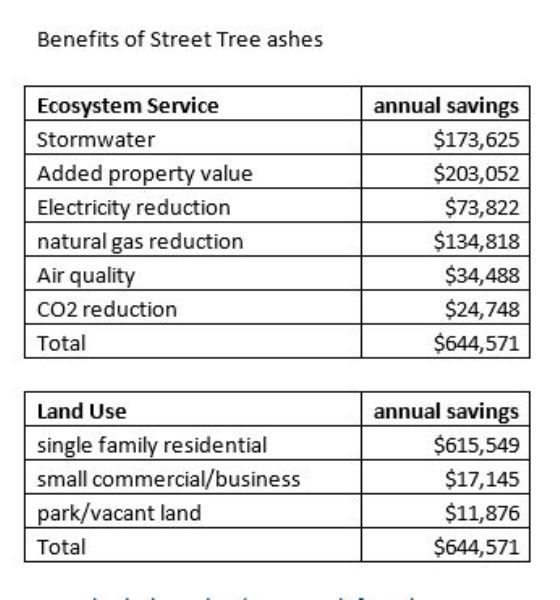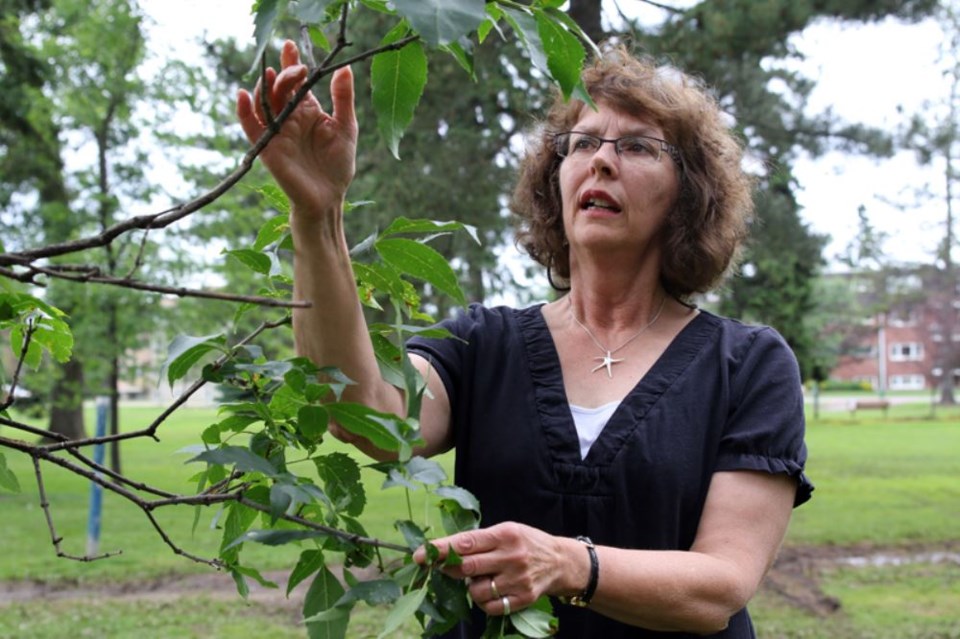THUNDER BAY – City administration has put a half-a-million-dollar price tag on holding back the advance of emerald ash borer in 2017.
If City Council turns down the request, the city forester warns, the cost could be much higher.
Shelley Vescio will appear before council on Monday to request $550,000 be added to next year’s budget and that administration be tasked with implementing a 10-year plan to fight the invasive species.
Vescio’s plan would attempt to target and isolate trees emerald ash borer has already infested. The city would remove some ash trees and treat others while replacing them with different species.
“It’s not going to hit the whole city all at one time in all trees,” she said.
“It’s going to move about. If we can try to slow its movement across the city by removing, replacing and treating, we’ll be in charge of the infestation. It won’t be in charge of us. We want to be able to track it and act accordingly.”
Vescio is unsure whether future program costs will be higher or lower but she pointed out ash trees represent one in every four trees in Thunder Bay’s canopy and the infestation has implications for the city’s stormwater and climate change strategies.
According to the 2011 Urban Forest Management Plan, street trees intercept 78,606 square metres of water from entering the city’s stormwater system annually.
Lakehead University undergraduate student Katelyn Kotska’s 2016 thesis paper focused on the economic impact of Thunder Bay’s public ash trees.
She argued ash trees alone intercept 18,575 square metres of water, resulting in $173,625 in annual savings, most of which occur in residential areas. Kotska's research showed financial implications in a number of areas.

“There’s no zero cost option to this management program,” Vescio said.
“It’s going to cost money whether we simply remove the trees and replace them or treat them. The trees are going to die. We have to something about it.”
Forest researchers are scheduled to visit the city this summer to study the emerald ash borer and what Vescio described as “odd things in its behaviour.”
Spring studies showed the emerald ash borer was residing in tree trunks but few were found in the upper canopy, the latter of which would be typical.
Vescio isn’t prepared to conclusively say whether the region’s cold winters are be responsible for the ash borer digging into the insulated trunk rather than their traditional behaviour of staying high in the trees.
“If it is having a two-year life cycle, the first year it’s going into the winter as a younger larvae, it’s not surviving the cold in the upper canopy but it would in the truck because there’s more insulation,” Vescio said.
“We’re not sure if that’s the situation but it’s unusual.”
